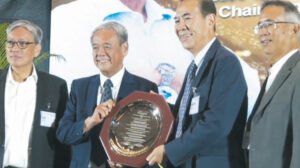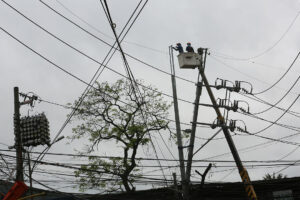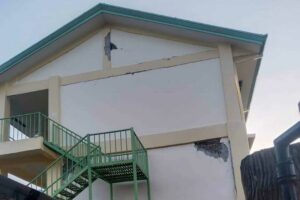BoP posts $3-billion surplus in Jan.

THE PHILIPPINES’ balance of payments (BoP) position swung to a surplus in January from a deficit a year ago, reflecting the proceeds of the government’s global bond issuance, the Bangko Sentral ng Pilipinas (BSP) said on Monday.
Data released by the BSP showed a BoP surplus of $3.08 billion in January, a reversal of the $102-million deficit in January 2022. The January figure was also significantly higher than the $612-million surplus in December 2022.
This was also the largest BoP surplus in 26 months or since the $4.24-billion surfeit in December 2020.
“The BoP surplus in January 2023 reflected inflows arising mainly from the National Government’s net foreign currency deposits with the BSP, which include proceeds from its issuance of ROP (Republic of the Philippines) Global Bonds, and net income from the BSP’s investments abroad,” the central bank said in a statement.
In January, the Philippines raised $3 billion from the Marcos administration’s second US dollar bond issuance. The government sold $500 million worth of the 5.5-year notes, $1.25 billion worth of the 10.5-year papers, and $1.25 billion worth of the 25-year sustainability bonds.
Security Bank Corp. Chief Economist Robert Dan J. Roces said the higher inflows of remittances from overseas Filipino workers (OFWs) was also a key factor in the higher BoP surplus.
“OFW remittances are a significant source of foreign exchange for the Philippines and have been relatively resilient despite the pandemic,” Mr. Roces said.
Cash remittances coursed through banks jumped by 3.6% to a record high of $32.54 billion last year, latest BSP data showed. It exceeded the $31.42 billion recorded in 2021.
“Another possible factor is some recovery in exports. As global trade recovers from the pandemic and China reopens, demand for Philippine-made goods may have increased, leading to higher export revenues and inflows of foreign exchange,” Mr. Roces said.
In December, the value of merchandise exports fell by 9.7% to $5.67 billion, while imports also declined by 9.9% to $10.26 billion. This brought the trade-in-goods deficit to $4.6 billion in December, narrower than the $5.12-billion gap a year earlier.
Mr. Roces said the resumption of international and local tourism also contributed to the surplus, as there could be an increase in foreign exchange earnings from tourism-related activities.
At its end-January level, the BoP surplus reflects a final gross international reserve of $100.7 billion, up by 4.8% from $96.1 billion a month earlier.
The country’s dollar reserves are enough to cover 6.2 times the country’s short-term external debt based on original maturity and 4.1 times based on residual maturity. It is also equivalent to 7.6 months’ worth of imports of goods and payments of services and primary income.
The BoP gives a glimpse into the country’s transactions with the rest of the world. A deficit means more funds left the country, while a surplus shows that more money came in.
“Looking ahead, FDI (foreign direct investment) inflows may also contribute to the BoP as the Philippines continues to offer investment incentives and maintain a relatively open investment environment, based on the pledges gathered by our businessmen and the National Government as well, so this could lead to inflows of foreign exchange,” Mr. Roces said.
FDI inflows into the Philippines plunged 43.6% year on year to $793 million in November.
Rizal Commercial Banking Corp. Chief Economist Michael L. Ricafort said the country’s BoP position could be supported by the continued growth in dollar inflows such as remittances, business process outsourcing revenues, FDI, foreign tourism receipts, among others.
The BSP projects the BoP position to reach a $5.4-billion deficit by the end of 2023, which is equivalent to -1.3% of the gross domestic product. The BoP position ended 2022 at a $7.26-billion deficit. — Keisha B. Ta-asan




